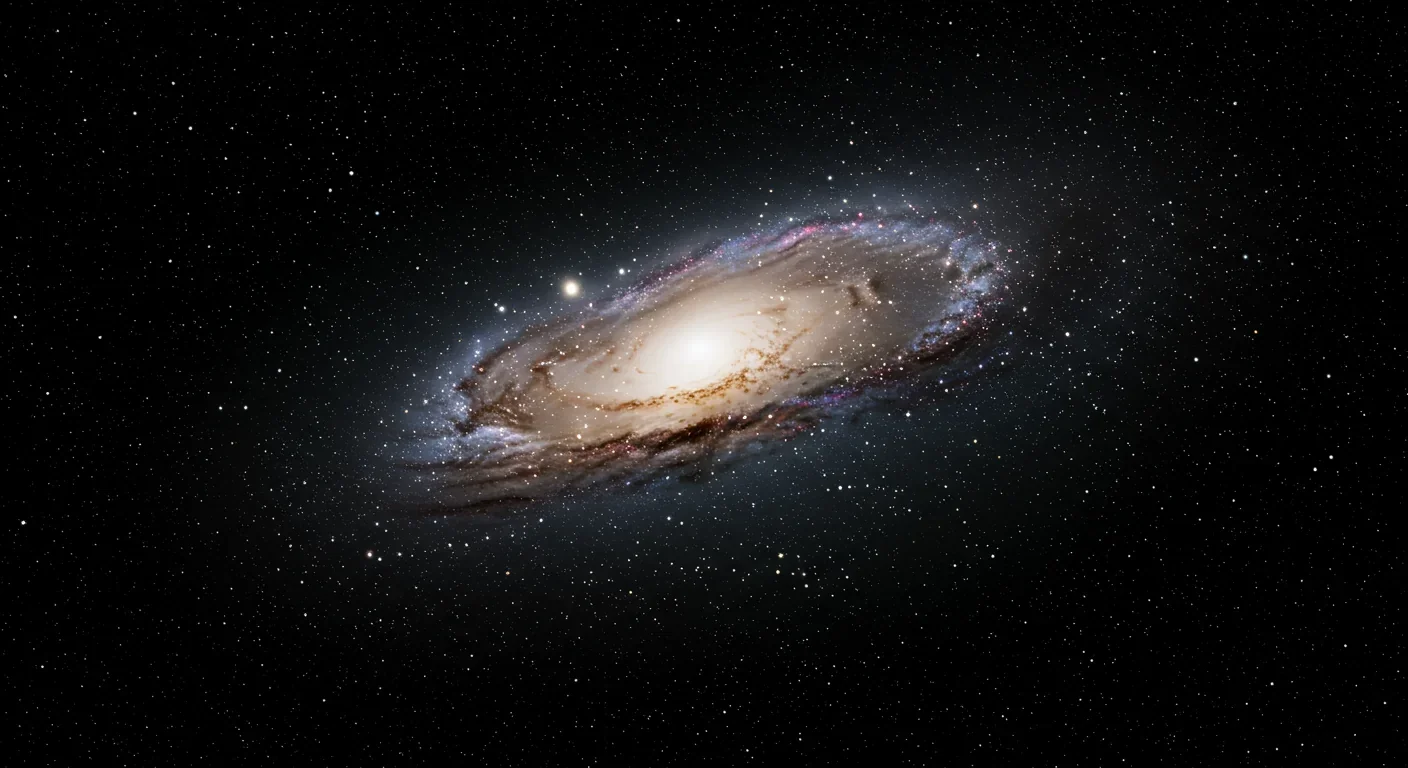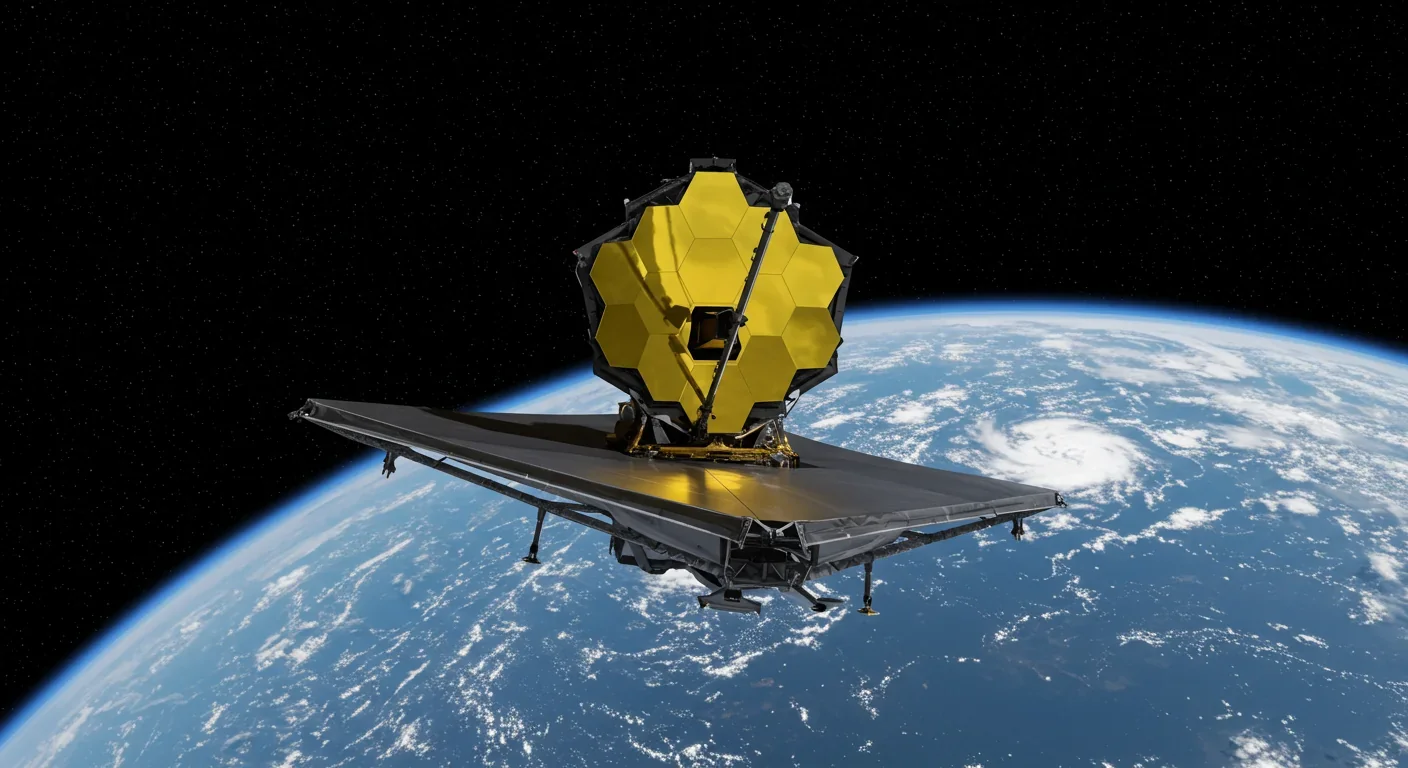Fusion Rockets Could Reach 10% Light Speed: The Breakthrough

TL;DR: Astronomers have mapped the Milky Way's Galactic Habitable Zone—a 10,000-light-year-wide ring where metallicity, supernova rates, and stellar stability align to support life. Earth orbits in this cosmic sweet spot, 27,000 light-years from the galactic center, where conditions have remained stable for billions of years. New missions like JWST and TESS are targeting planets in this zone, discovering Earth-sized worlds with atmospheres, and transforming the search for extraterrestrial life into a data-driven hunt within a narrow, well-defined region of our galaxy.

By 2030, astronomers predict we'll have identified dozens of Earth-like worlds orbiting Sun-like stars within a narrow ring of our galaxy—a cosmic Goldilocks zone where conditions align perfectly for life. This region, called the Galactic Habitable Zone, occupies just 20% of the Milky Way's disk but may host nearly all of the galaxy's 100 billion potentially life-bearing planets. Recent research mapping supernova rates, stellar metallicity, and radiation hazards has revealed something startling: Earth didn't just luck into a habitable solar system—our entire neighborhood in the galaxy sits in one of the few regions where complex life can endure for billions of years.
In 2024, a team led by astrophysicist Junichi Baba traced the Sun's four-billion-year migration from its birthplace 16,000 light-years from the Galactic center to its current position 27,000 light-years out. Using simulations of the Milky Way's spiral arms and central bar, they discovered the Sun traveled through regions with vastly different radiation environments and supernova frequencies. Some zones would have bombarded Earth with deadly gamma rays every few million years. Others lacked the heavy elements—iron, silicon, carbon—necessary to build rocky planets in the first place.
This finding transformed how astronomers think about galactic habitability. The Galactic Habitable Zone (GHZ) is no longer a static ring painted on a map. It's a dynamic, probabilistic region shaped by overlapping constraints: enough metallicity for planet formation, low enough supernova rates to avoid sterilization, and stable stellar orbits that don't fling planets into the galactic core or halo. Earth's position—8.3 kiloparsecs from the center, in the Orion-Cygnus arm—places it squarely in the safe zone, but barely. A few thousand light-years closer, and our ozone layer would have been stripped by nearby supernovae. A few thousand farther out, and the Sun might never have accreted enough heavy elements to form Earth at all.
The implications are profound. When we search for life beyond Earth, we're not just looking for the right kind of star or the right orbital distance—we're looking for systems that won the galactic lottery, orbiting within the narrow annulus where metallicity, radiation, and stability converge.
Thirteen billion years ago, the early universe contained almost no heavy elements. The first stars—Population III giants—were made of pure hydrogen and helium. When they died in supernova explosions, they seeded the cosmos with oxygen, carbon, nitrogen, and iron. Over successive generations, the interstellar medium grew richer in metals, and Population II stars formed with enough heavy elements to build small, rocky cores. But only Population I stars—young, metal-rich suns like ours—orbit in regions with sufficient metallicity to form Earth-like planets.
This process wasn't uniform across the galaxy. The Milky Way's inner regions, packed with dense star clusters, cycled through stellar birth and death rapidly. Each supernova enriched the local gas, creating a metallicity gradient: the galactic center peaked at –0.2 dex (about 60% solar metallicity), while the thin disk at the Sun's radius averages –0.02 dex (near solar). Move outward toward the halo, and metallicity plummets to –1.5 dex—so metal-poor that terrestrial planet formation becomes vanishingly rare.
Astronomers measure this gradient at about –0.07 dex per kiloparsec. That means every 3,260 light-years you travel outward, the abundance of planet-building elements drops by roughly 15%. A 2024 study by Kiersten Boley using TESS data found a hard metallicity cutoff at [Fe/H] ≈ –0.5. Below that threshold, zero super-Earths were detected in a sample of 10,000 stars, though models predicted 68. Boley described it as "a cliff where we expected a gradual slope." This cliff marks the outer boundary of the GHZ.
Mapping the GHZ requires combining three layers of data: metallicity surveys, supernova models, and orbital dynamics.
Metallicity measurements come from spectroscopy. Astronomers analyze starlight to measure absorption lines from iron, magnesium, and other heavy elements. Large surveys like SDSS-V/APOGEE have cataloged stellar abundances for hundreds of thousands of stars across the Milky Way. The result is a 3D chemical map showing where planet-forming materials are abundant.
Supernova frequency is calculated from stellar population models. Type II supernovae—the violent deaths of stars more than eight times the Sun's mass—occur predominantly in spiral arms, where massive stars are born. The Milky Way averages three supernovae per century, but the spatial distribution is uneven. Near the galactic center, supernova rates soar. A 2023 study estimated that within 300 parsecs (980 light-years) of Earth, roughly 20 supernovae have exploded in the past 11 million years—about one every 550,000 years. Within 10 parsecs (33 light-years), one supernova occurs every 240 million years on average. Any closer than 8 parsecs, and the gamma-ray burst would strip more than half of Earth's ozone layer, exposing surface life to lethal ultraviolet radiation.
Orbital stability comes from N-body simulations of galactic dynamics. Stellar orbits aren't fixed; they migrate as the Milky Way's spiral arms and central bar exert gravitational torques. The Sun, for instance, was born near the corotation radius at 5 kiloparsecs and migrated outward to 8.5 kpc over four billion years—crossing through regions with different hazard profiles. Stars in the thick disk can wander vertically by 600 to 1,100 parsecs, exposing them to varying radiation environments.
By overlaying these three datasets, astronomers identify a Galactic Habitable Zone spanning roughly 7 to 10 kiloparsecs from the center—a ring 10,000 light-years wide, sandwiched between the metal-poor outer disk and the radiation-soaked inner bulge.

Understanding the GHZ is transforming how we allocate telescope time and design life-detection missions. Instead of surveying stars at random, astronomers now prioritize targets in the habitable annulus. NASA's Transiting Exoplanet Survey Satellite (TESS), which has identified over 7,000 planetary candidates and 600 confirmed exoplanets as of 2025, deliberately focuses on bright, nearby stars within the local GHZ. Among these, TOI-700 d—an Earth-sized world in the habitable zone of its red dwarf star, just 100 light-years away—sits well within the safe metallicity range.
The James Webb Space Telescope (JWST) is now probing the atmospheres of these worlds. In 2023, JWST observed TRAPPIST-1 e, a rocky planet 40 light-years away, and detected tentative signs of a nitrogen-methane atmosphere—the first hint of a secondary atmosphere on a habitable-zone exoplanet. The planet orbits a red dwarf in a region of the galaxy with near-solar metallicity, confirming it formed in a chemically enriched environment. Planned follow-up observations will search for biosignature gases like oxygen and dimethyl sulfide, molecules that on Earth are produced almost exclusively by life.
But JWST has limits. It can study rocky planets around dim red dwarfs but struggles with Earth-like worlds orbiting Sun-like stars—the glare is too bright. That's where the next generation of observatories comes in. NASA's Habitable Worlds Observatory and ESA's proposed Life telescope will target Sun-like stars within the GHZ, using starshades and coronagraphs to block stellar light and directly image rocky planets. Astrophysicist Jessie Christiansen predicts, "If red dwarf planets have atmospheres, we will point every telescope on Earth at these planets to try and see something." The GHZ map tells us where to point.
This shift has economic implications. Space agencies are funneling billions into missions that prioritize GHZ targets. Private ventures like Breakthrough Starshot, aiming to send light-sail probes to Alpha Centauri, focus on nearby stars within the habitable ring. The GHZ framework also guides SETI searches: radio surveys now concentrate on stars in metallicity-rich regions, where technological civilizations are more likely to arise.
The GHZ concept solves a fundamental problem: where to look in a galaxy of 100 billion stars. By narrowing the search space to 20% of the disk, astronomers increase their odds of finding life by a factor of five.
Recent discoveries amplify this optimism. A 2024 study using chemical evolution models found that stellar migration can boost the number of habitable star systems in the outer galaxy by up to 500%. As metal-rich stars born near the galactic center migrate outward, they carry the seeds of terrestrial planets into quieter, safer neighborhoods. This means the GHZ may be larger and more dynamic than static models suggest.
Another surprise came from TESS flare observations. One study found that the most intense stellar flares from red dwarfs cluster near the poles, steering clear of the equatorial plane where most planets orbit. If confirmed, this implies that planets in the habitable zones of red dwarfs—previously dismissed as too radiation-baked for life—may enjoy surprising protection. Combined with JWST's detection of atmospheres on these worlds, the pool of potentially habitable planets just expanded.
Orange dwarfs, stars slightly cooler than the Sun, emerge as the best long-term hosts for life. They burn steadily for tens of billions of years—two to three times longer than the Sun—and have wider, more stable habitable zones. NASA scientists now prioritize orange dwarfs in the GHZ, where metallicity is high enough for terrestrial planet formation and supernova rates are low enough for multi-billion-year survival.
The GHZ is not a guarantee of safety. Even within the habitable annulus, catastrophic events can strike.
Gamma-ray bursts (GRBs)—relativistic jets from collapsing massive stars or merging neutron stars—release energies comparable to supernovae but with far greater reach. A GRB within 5,000 to 8,000 light-years, beamed directly at Earth, could sterilize the planet. The vaporization zone extends to 200 light-years. GRBs occur a few times per galaxy per million years, and because they're beamed, the true rate is several hundred times higher than observed. The brightest GRB ever recorded, GRB 221009A in 2022, is predicted to occur once every 10,000 years. Astronomers estimate that the GRB rate tracks star formation, meaning inner spiral arms—where massive stars are born—pose the highest risk.
Active galactic nuclei (AGN) add another layer of complexity. Supermassive black holes at galactic centers emit intense ultraviolet radiation when they're feeding. A 2024 study found that in compact elliptical galaxies, AGN UV can strip ozone from planetary atmospheres across the entire galaxy. In the Milky Way, the AGN is currently quiet, but periodic flares over the past billion years may have triggered ozone fluctuations. Paradoxically, moderate AGN UV can increase ozone in oxygen-rich atmospheres, reducing surface UV exposure—a protective feedback loop.
Comet bombardment is another orbital hazard. As the Sun migrates through spiral arms, gravitational perturbations in the Oort Cloud can send icy bodies plummeting toward Earth. Iron-60 isotopes in deep-sea crust indicate a supernova exploded within 30 parsecs of Earth less than 5 million years ago, likely triggering a spike in comet flux. Periodic mass extinctions—such as the Ordovician and Devonian events 440 and 375 million years ago—may correlate with the Sun's passage through high-radiation zones.
Metallicity itself poses a Goldilocks problem. Too little, and you can't build rocky planets. Too much, and gas giants dominate, migrating inward to disrupt terrestrial worlds in the habitable zone. Astronomers call this the "metallicity cliff": high enough for Earth-like cores, but not so high that Jupiter-like giants run wild.
The search for life in the GHZ isn't just a Western endeavor. China's Five-hundred-meter Aperture Spherical Telescope (FAST), the world's largest single-dish radio telescope, scans the galactic plane for technosignatures from civilizations in the habitable zone. India's Astrosat, the country's first space observatory, contributes ultraviolet and X-ray data on stellar activity in the GHZ, helping assess radiation hazards.
European Space Agency scientists emphasize caution. Astronomers at ESA's proposed Life Observatory argue that finding life on one exoplanet within the GHZ "should basically confirm that life is very common in the galaxy," as Cambridge astrobiologist Nikku Madhusudhan put it after tentative biosignatures were detected on K2-18 b. But ESA's approach prioritizes verification over announcement, reflecting Europe's methodical scientific culture.
Meanwhile, private tech billionaires in Silicon Valley fund rapid-deployment missions. Breakthrough Initiatives, backed by Yuri Milner, aims to send gram-scale probes to Proxima Centauri—a red dwarf 4.2 light-years away in the GHZ—within a generation. This "move fast and discover things" mentality contrasts with the decades-long timelines of government space agencies.
Diverse scientific perspectives also shape GHZ research. Astrobiologists in Tokyo focus on extremophiles—organisms that thrive in radiation-soaked environments—arguing that the GHZ boundaries may be too conservative. Researchers in Johannesburg study ancient stromatolites to understand how life endured early Earth's harsh UV environment, suggesting that ozone-free atmospheres don't preclude habitability. These global inputs refine the GHZ model from a rigid annulus to a probabilistic landscape.

Within the next decade, you'll likely witness the first confirmed detection of life beyond Earth. When that happens, the discovery will almost certainly come from a planet within the Galactic Habitable Zone. Understanding this concept now positions you to interpret the headlines—and the societal upheaval—that will follow.
If you're a student, skills in astrochemistry, planetary science, and data analysis will be in high demand. NASA and ESA are hiring scientists to process the flood of exoplanet data from JWST, the Habitable Worlds Observatory, and ground-based observatories like the Extremely Large Telescope. Private space companies—SpaceX, Blue Origin, Rocket Lab—are investing in GHZ-focused missions, creating jobs in mission design, spectroscopy, and AI-driven data mining.
For educators, the GHZ offers a powerful framework to teach interconnected science: chemistry (stellar nucleosynthesis), physics (orbital dynamics), biology (habitability constraints), and statistics (probabilistic mapping). Students who grasp the GHZ concept understand why Earth's location isn't random—it's the result of billions of years of cosmic evolution.
Investors are paying attention, too. Astrobiology startups developing biosignature-detection algorithms, radiation-shield materials for interstellar probes, and AI tools to predict exoplanet habitability are attracting venture capital. The GHZ map guides where these technologies will be deployed, making galactic geography a factor in startup valuations.
On a philosophical level, the GHZ challenges our sense of uniqueness. If 20% of the galaxy's stars orbit in safe, metal-rich zones, and TESS data suggest one in five Sun-like stars hosts an Earth-sized planet in the habitable zone, then the Milky Way could harbor millions of worlds like ours. The question shifts from "Are we alone?" to "How many neighbors do we have, and can we reach them?"
Yet the GHZ also underscores fragility. Earth didn't just need the right star, the right orbit, and the right chemistry—it needed to be born in the right galactic neighborhood at the right cosmic epoch. Seven billion years ago, metallicity was too low for super-Earths to form. A billion years from now, the Sun will have migrated into a hotter, more radiation-intense zone. The window for life is narrow, and we're living in it now.
The Galactic Habitable Zone reframes humanity's place in the cosmos. We're not at the center, but we're not on the periphery either. We're in the Goldilocks ring—a cosmic sweet spot where the galaxy's ingredients, hazards, and timescales align. As we map this zone with ever-greater precision, we're not just finding other worlds. We're learning how rare—and how precious—our own world truly is. The search for life beyond Earth is also a mirror, reflecting back the delicate balance that makes life here possible. And that knowledge may be the most transformative discovery of all.

Recent breakthroughs in fusion technology—including 351,000-gauss magnetic fields, AI-driven plasma diagnostics, and net energy gain at the National Ignition Facility—are transforming fusion propulsion from science fiction to engineering frontier. Scientists now have a realistic pathway to accelerate spacecraft to 10% of light speed, enabling a 43-year journey to Alpha Centauri. While challenges remain in miniaturization, neutron management, and sustained operation, the physics barriers have ...

Epigenetic clocks measure DNA methylation patterns to calculate biological age, which predicts disease risk up to 30 years before symptoms appear. Landmark studies show that accelerated epigenetic aging forecasts cardiovascular disease, diabetes, and neurodegeneration with remarkable accuracy. Lifestyle interventions—Mediterranean diet, structured exercise, quality sleep, stress management—can measurably reverse biological aging, reducing epigenetic age by 1-2 years within months. Commercial ...

Data centers consumed 415 terawatt-hours of electricity in 2024 and will nearly double that by 2030, driven by AI's insatiable energy appetite. Despite tech giants' renewable pledges, actual emissions are up to 662% higher than reported due to accounting loopholes. A digital pollution tax—similar to Europe's carbon border tariff—could finally force the industry to invest in efficiency technologies like liquid cooling, waste heat recovery, and time-matched renewable power, transforming volunta...

Humans are hardwired to see invisible agents—gods, ghosts, conspiracies—thanks to the Hyperactive Agency Detection Device (HADD), an evolutionary survival mechanism that favored false alarms over fatal misses. This cognitive bias, rooted in brain regions like the temporoparietal junction and medial prefrontal cortex, generates religious beliefs, animistic worldviews, and conspiracy theories across all cultures. Understanding HADD doesn't eliminate belief, but it helps us recognize when our pa...

The bombardier beetle has perfected a chemical defense system that human engineers are still trying to replicate: a two-chamber micro-combustion engine that mixes hydroquinone and hydrogen peroxide to create explosive 100°C sprays at up to 500 pulses per second, aimed with 270-degree precision. This tiny insect's biochemical marvel is inspiring revolutionary technologies in aerospace propulsion, pharmaceutical delivery, and fire suppression. By 2030, beetle-inspired systems could position sat...

The U.S. faces a catastrophic care worker shortage driven by poverty-level wages, overwhelming burnout, and systemic undervaluation. With 99% of nursing homes hiring and 9.7 million openings projected by 2034, the crisis threatens patient safety, family stability, and economic productivity. Evidence-based solutions—wage reforms, streamlined training, technology integration, and policy enforcement—exist and work, but require sustained political will and cultural recognition that caregiving is ...

Every major AI model was trained on copyrighted text scraped without permission, triggering billion-dollar lawsuits and forcing a reckoning between innovation and creator rights. The future depends on finding balance between transformative AI development and fair compensation for the people whose work fuels it.